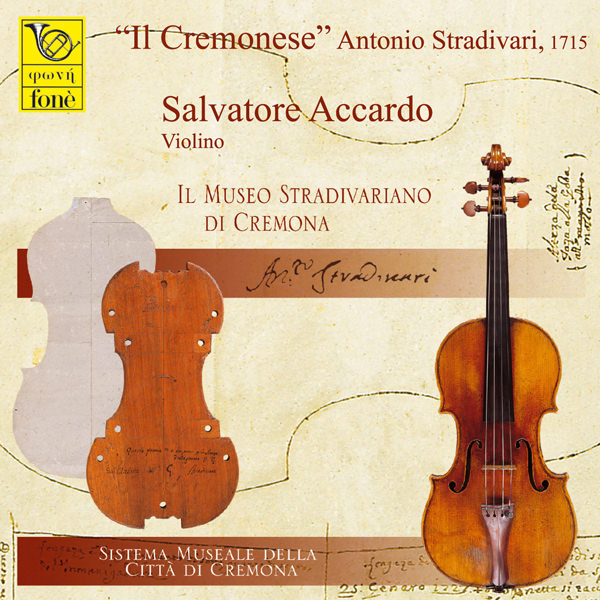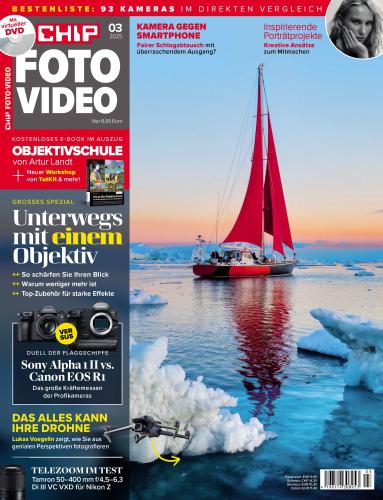
Salvatore Accardo – Il Cremonese – Stradivari, 1715 (2010)
DSF Stereo DSD64/2.82MHz | Time – 58:20 minutes | 2,33 GB | Genre: Classical
Studio Masters, Official Digital Download – Source: nativeDSDmusic | Booklet, Front Cover | © Fonè Records
Recorded: November 6, 7, 8 1993, Palazzo Cavalcabo, Cremona
The most extraordinary nucleus of the Stradivari Museum is represented by the tools which Antonio Stradivari used to realize his unique masterpieces. These include numerous forms, starting basis for the manufacture of an instrument, which were used to model the ribs and subsequently seal them to the top, bottom and corner-blocks. The forms, usually in walnut and maple, are sometimes accompanied by sets of models in wood or paper, such as, for example, the ones used for the manufacture of the alto Medicean viola or the tenor Medicean viola, the ones used for the making of a violino piccolo, or those used to realize the 1727 twelve string viola d’amore.
When designing his instruments Antonio Stradivari proceeded with extreme meticulousness. Once an instrument had been completed in each of its parts, the set of models that had been used for its realization was marked with a letter of the alphabet, collected and stored up in paper sheet.
The forms for violin exhibited are arranged in chronological order. The first two forms, undated, belong to the period in which Stradivari’s violins showed a clear legacy of Niccolò Amati’s typical style. Simone Ferdinando Sacconi allocated them to the period before 1689. The three successive forms, always according to Sacconi, are also allocated to the period prior to 1689 and they recall the phase following the so called Amati production.
The remaining forms used by Stradivari in the course of his long activity of violin making belong to the years of maturity. These are all dated, with the only exception of the one that Stradivari used to make, along with many other famous violins, the 1715 Cremonese ex Joachim, which is now in the collection “The strings of the Palazzo Comunale of Cremona”. Only three forms for viola are exhibited at the Stradivari Museum: the first one was used for the manufacture of the alto viola of 1672; the second one was used for the alto viola of the 4 October 1690; the third one for the tenor viola also dated 4 October 1690. As far as bassetti and cellos are concerned, no original forms have unfortunately reached us together with the other precious material which is now exhibited
Tracklist
Fritz Kreisler (1875-1962)
1 Tambourin Chinois 3.47
2 Cavatina 4.02
3 Schön Rosmarin 1.52
Antonin Dvorak (1841-1904)
4 Songs my mother taught me – Dvorák Op.55, n.4 from “Gipsy Melodies” 3.04
Johannes Brahms (1833-1897)
5 Hungarian Dance – Brahms arr. Kreisler 3.51
Nikolai Rimsky-Korsakov (1844-1908)
6 Hymne an die Sonne from “Le coq d’or” 5.09
Isaac Albéniz (1860-1909)
7 Malagueña Op.165, n.3 arr. Kreisler 3.56
Fritz Kreisler (1875-1962)
8 Liebesleid 3.28
Isaac Albéniz (1860-1909)
9 Tango Op.165, n.2 arr. Kreisler 2.28
Cécil Chaminade (1857-1944)
10 Sérénade Espagnole arr. Kreisler 2.18
Pyotr Ilyich Tchaikovsky (1840-1893)
11 Andante Cantabile Op.11 arr.Kreisler 6.17
Fritz Kreisler (1875-1962)
12 Caprice viennois Op.2 3.52
13 Indianisches Lamento in G moll 4.44
14 Poupée Valsante 2.41
Felix Mendelssohn (1809-1847)
15 Song without words Op.62, n.1 arr. Kreisler 3.04
Fritz Kreisler (1875-1962)
16 Londonderry air 4.28
Personnel:
Salvatore Accardo, violin (“Il Cremonese” Antonio Stradivari, 1715)
Laura Manzini, piano
Download:
mqs.link_SalvatreAccardIlCremneseStradivari17152010DSD64.part1.rar
mqs.link_SalvatreAccardIlCremneseStradivari17152010DSD64.part2.rar
mqs.link_SalvatreAccardIlCremneseStradivari17152010DSD64.part3.rar



















![Salvatore Accardo, Bruno Canino - Mozart: Sonatas for Violin and Piano KV 481, 303 - Variations KV 359, 360 (2022) [FLAC 24bit/96kHz] Salvatore Accardo, Bruno Canino - Mozart: Sonatas for Violin and Piano KV 481, 303 - Variations KV 359, 360 (2022) [FLAC 24bit/96kHz]](https://imghd.xyz/images/2023/02/03/g9st0rgwlvhoc_600.jpg)
![Salvatore Accardo, Laura Gorna, Maria Grazia Bellocchio - Sergej Prokofiev (2022) [FLAC 24bit/96kHz] Salvatore Accardo, Laura Gorna, Maria Grazia Bellocchio - Sergej Prokofiev (2022) [FLAC 24bit/96kHz]](https://imghd.xyz/images/2022/12/20/xua8zcng4y38b_600.jpg)
![Salvatore Accardo, Bruno Canino - Mozart: Sonatas for Violin and Piano KV 379, 380, 547 (2022) [FLAC 24bit/96kHz] Salvatore Accardo, Bruno Canino - Mozart: Sonatas for Violin and Piano KV 379, 380, 547 (2022) [FLAC 24bit/96kHz]](https://imghd.xyz/images/2023/02/03/eu4yeb70s3pbb_600.jpg)
![Salvatore Accardo, Bruno Canino - Mozart: Sonatas for Violin and Piano KV 376 ,377, 372, 402, 404 (2022) [FLAC 24bit/96kHz] Salvatore Accardo, Bruno Canino - Mozart: Sonatas for Violin and Piano KV 376 ,377, 372, 402, 404 (2022) [FLAC 24bit/96kHz]](https://imghd.xyz/images/2023/02/03/rg5aq3wtbbrxb_600.jpg)
![Salvatore Accardo - Niccolò Paganini: 24 Capricci Op.1 (2021) [DSF DSD64/2.82MHz + FLAC 24bit/96kHz] Salvatore Accardo - Niccolò Paganini: 24 Capricci Op.1 (2021) [DSF DSD64/2.82MHz + FLAC 24bit/96kHz]](https://imghd.xyz/images/2022/03/28/008c545f.png)
![Salvatore Accardo - I Violini di Cremona, Omaggio a Kreisler (2010) [DSF DSD64/2.82MHz] Salvatore Accardo - I Violini di Cremona, Omaggio a Kreisler (2010) [DSF DSD64/2.82MHz]](https://getimg.link/images/imgimgimg/uploads/2019/05/hrH2TZ2.jpg)
![Salvatore Accardo, Bruno Canino - Mozart: Sonatas for Violin and Piano KV 526, 296, 305 (2022) [FLAC 24bit/96kHz] Salvatore Accardo, Bruno Canino - Mozart: Sonatas for Violin and Piano KV 526, 296, 305 (2022) [FLAC 24bit/96kHz]](https://imghd.xyz/images/2023/02/03/ql294w6fy7s1a_600.jpg)
![Salvatore Accardo - Pablo de Saraste - Spanish Dances for Violin and Piano (2020) [FLAC 24bit/88,2kHz] Salvatore Accardo - Pablo de Saraste - Spanish Dances for Violin and Piano (2020) [FLAC 24bit/88,2kHz]](https://getimg.link/images/imgimgimg/uploads/2020/09/w6yH2un.jpg)
![Salvatore Accardo - AUDIOPHILE VIOLIN (2012) [FLAC 24bit/88,2kHz] Salvatore Accardo - AUDIOPHILE VIOLIN (2012) [FLAC 24bit/88,2kHz]](https://imghd.xyz/images/2025/01/26/8012871012237_600.jpg)
![Salvatore Accardo, Margaret Batjer, Toby Hoffman, Rocco Filippini, Theresa Tunnicliff, Robin Graham, Augusto Loppi - Quintet KV 581, KV 407 - Quartet KV 370 (2022) [FLAC 24bit/96kHz] Salvatore Accardo, Margaret Batjer, Toby Hoffman, Rocco Filippini, Theresa Tunnicliff, Robin Graham, Augusto Loppi - Quintet KV 581, KV 407 - Quartet KV 370 (2022) [FLAC 24bit/96kHz]](https://imghd.xyz/images/2023/02/03/jjyqm0nf96krb_600.jpg)
![Salvatore Accardo, Bruno Canino - W.A.MOZART KV 454, 301, 306 (2022) [FLAC 24bit/96kHz] Salvatore Accardo, Bruno Canino - W.A.MOZART KV 454, 301, 306 (2022) [FLAC 24bit/96kHz]](https://imghd.xyz/images/2022/12/20/shyftxohpl9dc_600.jpg)
![Salvatore Accardo, Bruno Canino - W.A. MOZART KV 378, 302, 304, 403 (2022) [FLAC 24bit/96kHz] Salvatore Accardo, Bruno Canino - W.A. MOZART KV 378, 302, 304, 403 (2022) [FLAC 24bit/96kHz]](https://imghd.xyz/images/2022/12/20/xj0eaf4jcr4bb_600.jpg)
![Salvatore Accardo, Margaret Batjer, Toby Hoffman, Cynthia Phelps, Rocco Filippini - W.A. MOZART KV 174, 593 (2022) [FLAC 24bit/96kHz] Salvatore Accardo, Margaret Batjer, Toby Hoffman, Cynthia Phelps, Rocco Filippini - W.A. MOZART KV 174, 593 (2022) [FLAC 24bit/96kHz]](https://imghd.xyz/images/2022/12/20/sq1kpvauxbfqa_600.jpg)
![Salvatore Accardo - The Best Of Violin (2010) [Reissue 2019] SACD ISO + FLAC 24bit/96kHz Salvatore Accardo - The Best Of Violin (2010) [Reissue 2019] SACD ISO + FLAC 24bit/96kHz](https://getimg.link/images/imgimgimg/uploads/2021/02/UJC3jTw.jpg)
![Salvatore Accardo, Stefania Redaelli - EDVARD GRIEG Sonatas for Violin and Piano No. 1, 2, 3 (2022) [FLAC 24bit/96kHz] Salvatore Accardo, Stefania Redaelli - EDVARD GRIEG Sonatas for Violin and Piano No. 1, 2, 3 (2022) [FLAC 24bit/96kHz]](https://imghd.xyz/images/2022/12/20/vht2760lu1qka_600.jpg)